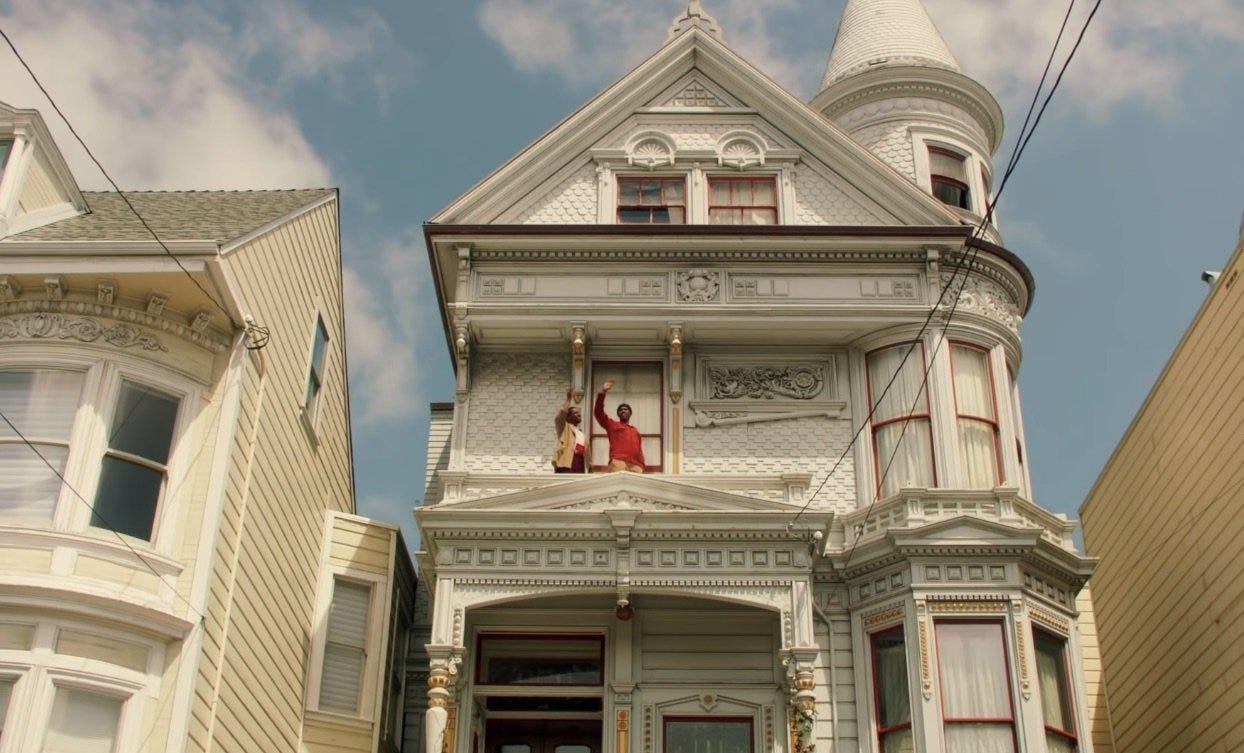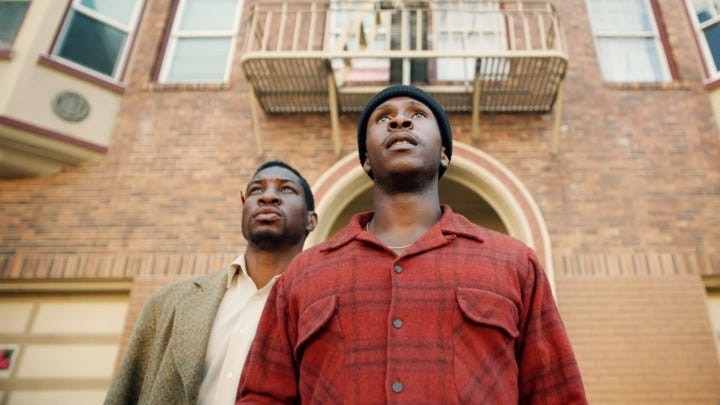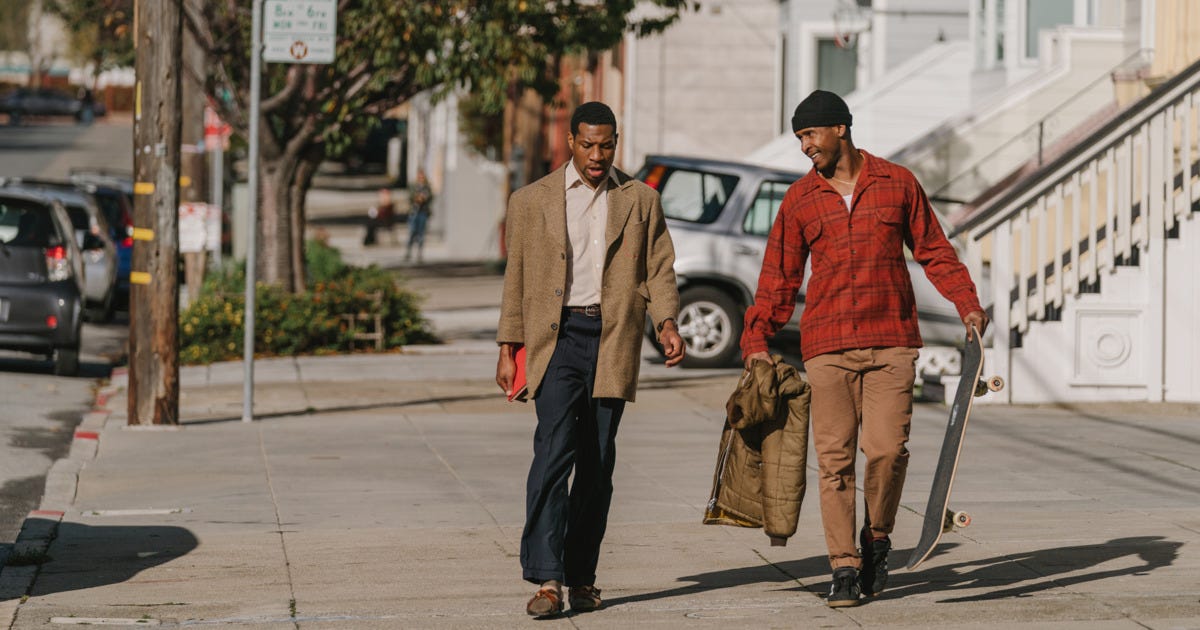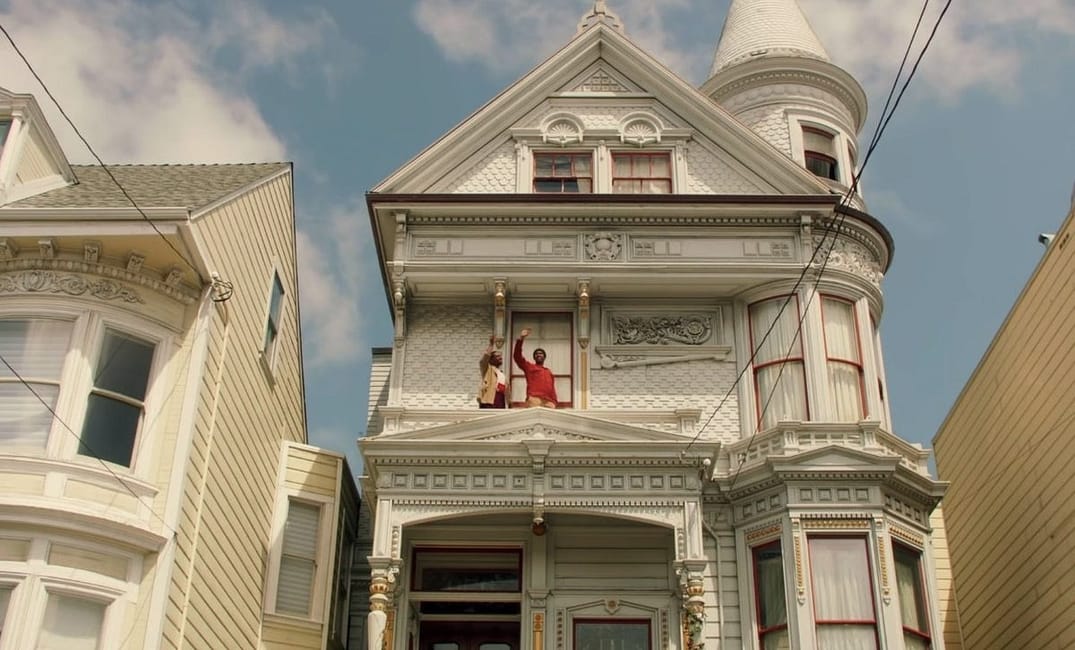
In the final act of the recently released independent film The Last Black Man in San Francisco, the protagonist, Jimmie (played by Jimmie Fails), is on a Muni bus when he overhears two women, clearly transplants to the city, dissing San Francisco.
“I’ve been saying for months, let’s just move to East LA. This city is dead,” one of the women says.
Up until this point in the film—which debuted at the Sundance Film Festival and has been lauded by critics—Jimmie has been a silent observer of the gentrifiers who’ve invaded his hometown and their notably un-San Francisco-like behavior. This time, though, he has a response: he asks them if they love San Francisco. When they stare blankly at him, he continues, “You don’t get to hate San Francisco. You don’t get to hate it unless you love it.”
Sitting in Oakland’s Grand Lake Theatre with a packed local audience, I reacted audibly to this line, so deeply did it move me. As a San Francisco native (and now a longtime Oakland resident), I have a love-hate relationship with my hometown. I don’t know how many times I’ve told people in recent years, “I hate what’s happening to my city,” or said that even if I had the money, I wouldn’t move back across the bridge.
I’ve been so focused on how much I hate all the changes that I see in the city […] that I’ve forgotten how much I also love San Francisco.
But I’ve been so focused on how much I hate all the changes that I see in the city — all of which make it less and less recognizable to me as the beautiful bastion of diversity, tolerance, and political activism that it once was and that so deeply informed my identity — that I’ve forgotten how much I also love San Francisco.
I consider myself a Mission girl, although I was raised in other neighborhoods as well, particularly the Excelsior (which, thankfully, still flies under the radar for most gentrifiers). I went to elementary school at Bret Harte in Hunters Point and was one of the very few white kids among the majority population of black and Samoan kids who lived in the neighborhood. In fact, a good portion of The Last Black Man in San Francisco was filmed in Bayview–Hunters Point, the last predominantly black neighborhood in the city. My very lefty parents made an intentional decision to “reverse-integrate” their white middle-class child into a school in one of the poorest and least white neighborhoods in the city.
I went to middle and high school in the Sunset at Herbert Hoover and Lowell High Schools. Tangentially, St. Ignatius (or “S. I.,” as we always called it) is mentioned in the film as the school that’s attended by the yuppie real estate agent who turns out to be the villain of the film. I laughed at this very believable detail, knowing that it could have come only from a San Francisco native.
When I go into the city, and especially when I go back to the Mission, I always brace myself for the probability that yet another small business I grew up with will be gone.
It’s interesting that Joe Talbot and Jimmie Fails — the director and the star of the film, respectively, who are San Francisco natives and who wrote The Last Black Man in San Francisco together — decided to write a fellow San Franciscan as the villain (though unnamed gentrifiers are also given plenty of side eye). To me, this signals that they’re placing some of the blame for gentrification and related displacement not on some nefarious outside force, but on the shoulders of San Francisco itself.

In many ways, although we might not want to admit it, this is an accurate interpretation. It was San Francisco mayor Ed Lee and the Board of Supervisors that instituted the Twitter tax break in 2011 in order to lure tech companies to the dilapidated Mid-Market area. This policy, which expired last month and is now thought by several supervisors to have been a bad public policy, not only led to skyrocketing rents but also drew many nouveau riche tech workers to the city who displaced natives and longtime residents. The growth of the homeless population and tent cities throughout the Bay Area because of the second tech boom has been unprecedented.
When I go into the city, and especially when I go back to the Mission, I always brace myself for the probability that yet another small business I grew up with will be gone. Most recently, this happened with several of my favorite haunts: Lucca Ravioli and La Victoria, an almost 70-year-old Mexican panadería that was a block from my mom’s apartment and that we would often frequent; in fact, I remember when La Victoria also had a restaurant attached to it, though that part of the business closed two decades ago. In 2011, it was Discolandia, a Latin music store right next to our old apartment building on 24th and Harrison that was frequented by major musicians, such as Celia Cruz and Tito Puente.
I love the cultural uniqueness of the Mission, which shaped my identity in countless ways, and want it to be protected. Yet these days, I see fancy coffee shops and expensive restaurants catering to all the hipsters who have moved into the neighborhood during the past two decades. They like the cultural cachet and virtue-signaling of living in a gritty working-class neighborhood, but most don’t want to live next to the brown people who gave the Mission its unique identity.
For a long time, I’ve felt angry and depressed about San Francisco abandoning its natives and selling its soul to the highest bidder. In a recent interview with Wired, The Last Black Man in San Francisco director Talbot stated, “This recent wave we’re seeing through here is more like a gold rush. You’re not coming to be a part of reality. You’re coming to disrupt it. You have to take from it. It’s a land grab. Literally.”

What The Last Black Man in San Francisco made me realize was that my feelings of bitterness stem from a sense of ownership over the city. We San Francisco natives are petty about people claiming the city as their hometown. Whenever we hear someone do it, we ask them where they grew up just to make sure they’re not really from Antioch. You know what they say about San Francisco natives? That we’re like baby pigeons, as everyone knows they exist, but no one ever sees them. We feel special and unique and like one of the chosen few. And we guard our ownership of the city jealously against any pretenders falsely claiming that they’re natives.
There’s no one right way to respond to gentrification and displacement. While we can all agree that shutting down and refusing to see any nuance between “native” and “outsider” is likely a counterproductive response, it’s not hard for me to understand why Miles is so resentful.
Ownership of a city is also a major theme of the 2018 film Blindspotting, written by and starring Oakland natives Rafael Casal and Daveed Diggs. The film has several things in common with The Last Black Man in San Francisco, including the issue of gentrification (a more recent but no less complex issue in Oakland) and the intimate dynamics of male friendship. Nonetheless, the character of Miles in Blindspotting has a much more antagonistic relationship with Oakland transplants. There’s the added element of Miles being a white Oaklander who is assumed to be a transplant because of his race. In a pivotal scene, he gets into an ill-advised fight because a black transplant assumes that because he’s white, he must be an outsider.
In contrast, The Last Black Man in San Francisco takes on gentrification in a less straightforward and confrontational way. Jimmie either silently condemns SF transplants or, as described earlier, patiently schools them instead of angrily confronting them. Regarding this artistic choice, Fails stated, “A lot of natives feel like, ‘Fuck you, gentrifiers. Fuck gentrification. Fuck tech.’ We could’ve easily made a movie like that…but that’s not how you want to fight that battle. That’s not how you’re heard.”
There’s no one right way to respond to gentrification and displacement. While we can all agree that shutting down and refusing to see any nuance between “native” and “outsider” is likely a counterproductive response, it’s not hard for me to understand why Miles is so resentful.
Perhaps all San Francisco natives should reflect on our attachment to the city and question the narratives we’ve constructed for ourselves — particularly because “outsiders” have made important contributions to San Francisco’s unique identity.
The Last Black Man in San Francisco has much to say about ownership and belonging to a place (in this case, an actual house). Jimmie has clung to a narrative about this house in order to root his identity, particularly because, as we learn throughout the course of the film, his parents have been largely absent in his life. He needs to feel that he belongs to something and that something belongs to him, so he pours his whole identity into this house. While I won’t spoil the plot, he ultimately has to reckon with and let go of this narrative of his identity that he has built his life around.
Perhaps all San Francisco natives should reflect on our attachment to the city and question the narratives we’ve constructed for ourselves — particularly because “outsiders” have made important contributions to San Francisco’s unique identity. However, on account of the vast wealth inequality that currently characterizes the city, which translates to a place that is hostile to working-class families like my own, San Francisco might never be that weird, wonderful, welcoming place again. It’s possible that the San Francisco of my youth is forever lost. If that’s the case, I’ll mourn my lost city, but I’ll still consider myself lucky to have been raised there.







